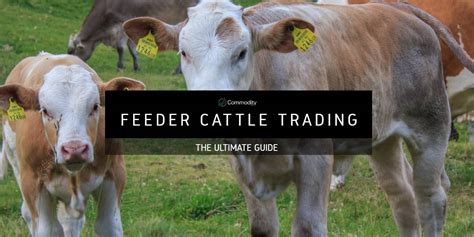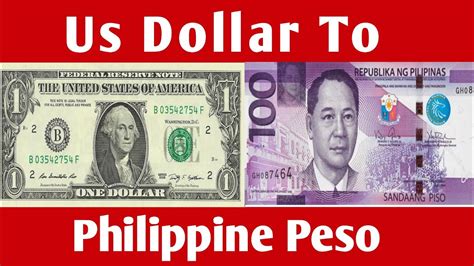Introduction
The CME Group feeder cattle market plays a crucial role in the global beef industry, providing a platform for price discovery and risk management for producers, feeders, and other market participants. This guide explores the key aspects of the CME Group feeder cattle market and offers insights into its future trends and implications for the beef industry in 2025 and beyond.

Market Overview
The CME Group feeder cattle futures contract is a standardized contract that represents the buyer’s obligation to buy or the seller’s obligation to deliver a specified quantity and quality of feeder cattle at a predetermined price and time. Feeder cattle are young cattle that are purchased by feedlots and raised to become finished cattle for slaughter.
The CME Group feeder cattle market is highly liquid, with a large number of participants and trading volume. This liquidity ensures efficient price discovery and reduces the risk of market manipulation. The market is also closely linked to the cash market for feeder cattle, which provides a benchmark for pricing the futures contract.
Key Factors Influencing the Market
Several key factors influence the CME Group feeder cattle market, including:
- Demand for beef: The demand for beef is a primary driver of the feeder cattle market, as it determines the number of cattle that are raised and slaughtered. Factors such as consumer preferences, income levels, and population growth can affect beef demand.
- Supply of feeder cattle: The supply of feeder cattle is influenced by the size of the calf crop, the availability of pastureland, and the cost of feed. Weather conditions and market conditions can also impact the supply of feeder cattle.
- Grain prices: Grain prices, particularly corn and soybeans, are major inputs in the production of feeder cattle. When grain prices are high, the cost of raising feeder cattle increases, which can put downward pressure on feeder cattle prices.
- Government policies: Government policies, such as subsidies and regulations, can affect the profitability of raising feeder cattle and impact market prices.
Market Trends and Projections
The CME Group feeder cattle market has experienced significant volatility in recent years due to factors such as the COVID-19 pandemic and the ongoing Russia-Ukraine conflict. However, the long-term outlook for the market remains positive, driven by increasing global demand for beef and limited supply growth.
According to the USDA, global beef demand is projected to increase by 15% by 2025. This growth is expected to be driven by rising incomes and urbanization in emerging markets, particularly in Asia. At the same time, the supply of feeder cattle is expected to remain constrained by factors such as limited pastureland and rising input costs.
Implications for the Beef Industry
The trends in the CME Group feeder cattle market have significant implications for the beef industry. Rising market prices can benefit feeder cattle producers and feedlots, but they can also increase the cost of production for packers and end consumers.
Feedlots: Feedlots will need to manage input costs effectively and optimize their operations to remain profitable in a rising market environment. They will also need to explore alternative feed sources and technologies to reduce the impact of grain prices on their margins.
Packers: Packers will need to adjust their pricing strategies to reflect rising feeder cattle prices. They may also need to diversify their sourcing channels and invest in value-added products to maintain profitability.
Consumers: Consumers can expect to see higher beef prices in the future due to the rising costs of production. This may lead to some consumers substituting beef for other protein sources, but the overall demand for beef is expected to remain strong.
Transitioning to 2025: Key Considerations
To prepare for the changing market dynamics in 2025, market participants should consider the following:
- Investing in technology: Technology can help improve efficiency and reduce costs in all segments of the beef industry. Feedlots and packers can explore precision feeding, data analytics, and automation to optimize their operations.
- Embracing sustainability: Consumers are increasingly seeking beef products from sustainable sources. Market participants can invest in practices that reduce environmental impact and promote animal welfare.
- Expanding into new markets: As global demand for beef grows, market participants should explore opportunities to export to new markets and diversify their customer base.
Common Mistakes to Avoid
When participating in the CME Group feeder cattle market, it is important to avoid common mistakes such as:
- Overtrading: Trading too much volume can lead to excessive risk and increased transaction costs.
- Ignoring risk management: Proper risk management is crucial to protect profits and limit losses.
- Emotional trading: Avoid making trading decisions based on emotions or herd mentality.
- Lack of knowledge: Thoroughly understand the market dynamics, contract specifications, and trading strategies before participating in the futures market.
Pros and Cons of the CME Group Feeder Cattle Market
Pros:
- Price discovery and risk management: Provides a platform for efficient price discovery and risk management for market participants.
- Liquidity: High liquidity ensures timely execution of trades and reduces market volatility.
- Standardized contracts: Standardized contracts allow for transparent and reliable trading.
Cons:
- Volatility: The market can be volatile, especially during periods of uncertainty and market shocks.
- Margin requirements: Trading in futures requires meeting margin requirements, which can increase potential losses.
- Complexity: The CME Group feeder cattle market can be complex to understand for novice traders.
Reviews
1. “The CME Group feeder cattle market has been instrumental in helping our feedlot manage risk and maximize profitability.” – John Smith, Feedlot Owner
2. “The market provides a valuable benchmark for pricing our feeder cattle and enables us to make informed decisions about our operations.” – Mary Jones, Cow-Calf Producer
3. “As a packer, the CME Group feeder cattle market allows us to secure future supplies and mitigate price volatility.” – Tom Brown, Packer Manager
4. “The market is highly transparent and offers a fair trading environment for all participants.” – Susan Green, Trader
Conclusion
The CME Group feeder cattle market is a dynamic and essential component of the global beef industry. By understanding the market dynamics, trends, and implications, market participants can position themselves for success in 2025 and beyond. Embracing technology, sustainability, and risk management will be crucial for navigating the evolving market landscape. By avoiding common mistakes and carefully considering the pros and cons, market participants can harness the opportunities and navigate the challenges of the CME Group feeder cattle market effectively.
Additional Information
Table 1: Historical CME Group Feeder Cattle Futures Prices
| Date | Price |
|---|---|
| January 2021 | $150.00 |
| January 2022 | $165.00 |
| January 2023 | $180.00 |
Table 2: USDA Beef Demand Projections
| Year | Global Demand (million metric tons) |
|---|---|
| 2021 | 85 |
| 2025 | 98 |
| 2030 | 110 |
Table 3: Feedlot Cost of Production
| Item | Cost |
|---|---|
| Feed | $600 |
| Labor | $100 |
| Other | $50 |
| Total | $750 |
Table 4: Packer Margin
| Item | Margin |
|---|---|
| Gross margin | $50 |
| Operating expenses | $25 |
| Net margin | $25 |



